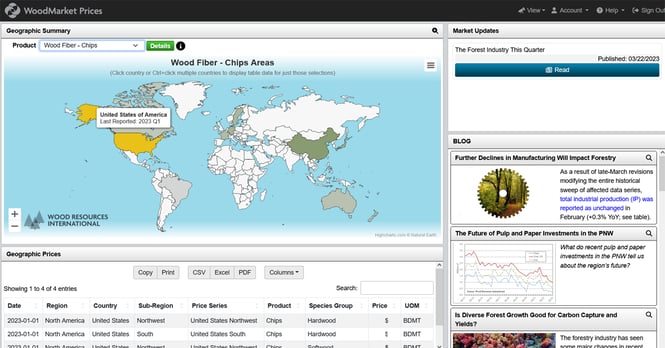Asia has increased its share of global wood pellet imports to a record 32%. Worldwide trade of wood pellets was practically unchanged year-over-year compared to 2022. This was the first-time shipments failed to rise since 2017 when wood pellets became a globally traded commodity.
Despite the minimal global volume change, there were some noteworthy shifts in trade flows on a country-level basis in 2022. Asia, represented by Japan and South Korea, has continued to grow import volumes at the expense of European buyers. In 4Q 2022, this accounted for one-third of the world’s import volume—up from only 18% five years ago.
Japan Moving to Become Fastest Growing Global Biomass Market
Demand for biomass, including wood pellets, has increased remarkably quickly in Japan. The upward trend is expected to continue, and Japan will be the fastest-growing market in the world in the next 5-10 years.
Vietnam is currently the primary pellet supplier to Japan, followed by Canada and the US. Japanese power companies have begun writing long-term offtake agreements with larger suppliers in North America. Thus, the most considerable pellet supply expansion in the coming years will likely be in the US and Canada.
Pellet producers in the US South have historically shipped all their production to European power companies. Even as late as 2021, there were no exports from the US to Asia.
However, in 2022 Asian demand picked up. By 4Q 2022, 13% of the total volume from the Southern states was shipped to Japan!
Related: Record Share of Lumber Production Now in US South
This sudden change in trade flow will probably continue to grow. Expanded long-term sales to Japanese power companies and a declining share of shipments to Europe contribute to this growth.
US Woodchip Exports Up 40% Over the Last 2 Years
The US’s woodchip exports have increased by about 40% in the past two years to reach an all-time high in 2022. The overseas shipments represented 73% of total shipments, up from 45% in 2020 and driven by higher demand for softwood fiber by Asian pulpmills.
About 90% of the US export volume was softwood chips. The remainder was mixed hardwood chips from the northern US destined for Canada.
Prior to the early 2000s, the US regularly exported hardwood chips to Japan. However, that trade virtually stopped in 2003 when Japanese pulpmills shifted to source hardwood fiber to Eucalyptus and Acacia plantations around the Pacific Rim.
Outbound softwood chip exports from the US have shifted drastically over the past three years. Canada was the country that imported the most in 2020. Japan now holds the title for 2022 after more than doubling total imports from the US.
US softwood export prices increased from 2021 to 2022 because of tighter supply and higher demand. The FOB prices for woodchips to China were slightly higher than for Japan-destined chips in 2022.
Crucial Pricing Data and Trends from WoodMarket Prices
This post was adapted from Wood Resources International’s Wood Resource Quarterly (WRQ) report. WRQ reports are only available within our interactive online business intelligence platform, WoodMarket Prices.
